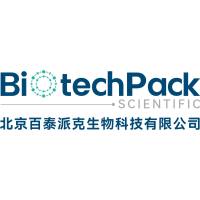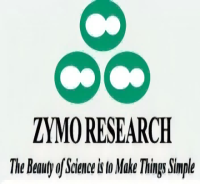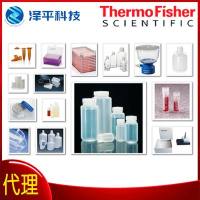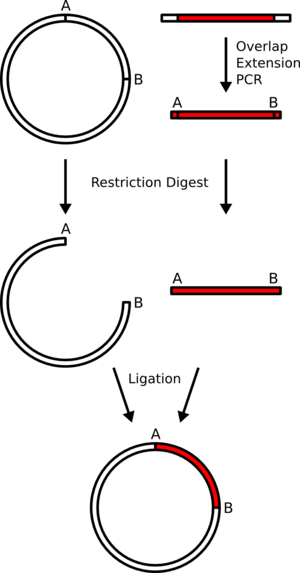24h Subcloning Protocol
互联网
The following protocol is designed for subcloning inserts (I) from one vector into another vector (V). The inserts can be anywhere from 30 bp to 8 kb (possibly higher).
Perform restriction digests of (I) and (V) to obtain compatible overhangs (even blunt ligations work well with this protocol). Generally, perform restriction digests as follows:
DNA 1-10 μl (2 μg TOTAL)
10X Buffer 5 μl (determine appropriate buffer from NEB catalog)
Enzyme 1 1-2 μl (20-40 U is sufficient)
Enzyme 2 1-2 μl (same as above)
100X BSA 1 μl
Water to 50 μl total volume
Note: Add enzymes LAST. Digest at 37 ℃ for 2-3 h (no longer!).
1. OPTIONAL: to the (V) digest, add 1 μl of Calf Intestinal Alkaline Phosphatase (CIP)―Boehringer Mannheim, 1 U/μl. Incubate at ROOM TEMP for an additional 30 min.
2. During the incubation, prepare a 1-2% agarose gel in 1X TAE (NOT TBE! ) with wide lanes (8-10 mm wide). DO NOT add EtBr to the agarose gel (otherwise this will mutate your DNA samples).
3. Add 10 μl of 6X agarose gel loading buffer to the digests, and load 30 μl of the digests into a lane in the agarose gel. Load 7 μl of 1 kb DNA ladder in a separate lane.
4. Run the gel at 70 V for 30 min to 1 h.
5. Stain the gel in a 2.5 μg/ml solution of EtBr for 5-10 min (higher the percentage gel, the longer the stain time).
6. Run the gel again at 70 V for 10 min (this will rapidly destain the gel).
7. View the gel at LOW INTENSITY on the UV gel box, and take a 2.5 sec. Exposure picture for your records. Minimize exposure of the gel to UV light.
8. Using a CLEAN blade for each fragment, excise the desired fragments with as little excess agarose as possible, and place in a preweighed and labeled eppendorf tube.
9. Weigh the agarose gel slice, and add 3 volumes of buffer QG (from the Qiagen Gel Extraction Kit). Incubate at 42 ℃ for 10-15 min until the gel slice is completely dissolved.
10. Add 1 volume of isopropanol, mix, and load on a PURPLE spin column. Spin at top speed for 30 sec. And discard the eluate.
11. Wash the column with 500 μl of buffer QG, spin, then wash with 750 μl of PE.
12. Spin a final time to remove all traces of PE.
13. Elute the DNA with 50 μl of WATER.
Proceed to LIGATION:
LIGATION:
14. Boehringer Mannheim Rapid Ligation Kit. Thaw DNA dilution buffer and T4 ligase buffer quickly and place on ice.
15. Add 2 μl of (V) and 2 μl of (I) to 1 μl of 5X DNA dilution buffer in an eppendorf tube.
16. Add 5 μl of 2X Ligase Buffer, flick to mix, and add 0.5 μl of Ligase. Mix and incubate at room temp for 5 min.
17. Place on ice, and proceed to TRANSFORMATION.
TRANSFORMATION:
18. Quickly thaw a tube of DH5a and place on ice. Prechill an empty eppendorf on ice, and add 90 μl of the DH5a into this tube.
19. Add 8 μl of the ligation reaction to the DH5a, and incubate on ice for 30 min.
20. Heat shock at 42℃ for 45 sec.
21. Cold shock on ice for 2 min.
22. Add 900 μl of LB and incubate at 37 ℃ with shaking for 30 min.
23. Spin tube at 5K rpm for 2 min. Remove all but 100 μl of the LB and resuspend pellet.
24. Plate pellet on LB plate with appropriate antibiotic.
25.Incubate inverted at 37 ℃ overnight









